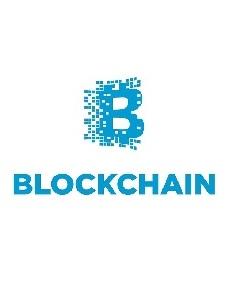
Blockchain-an Emerging Technology that has Promise to Address Functional and Security Needs in Healthcare IT

Remember when businesses all kept their own ledgers, which required updates as each new business transaction occurred? How about the added expenses that had to be paid to intermediaries adding margin for services? And what about the inefficiencies as each business in the network (supplier, buyer, seller) all recorded the same transactions in their individual ledgers? While many businesses and industries, including healthcare, still operate this way, an emerging technology has great potential to advance Healthcare IT across the economy and in the government, namely “Blockchain.”
Blockchain is the technology that enables the transactions of bitcoin, the crypto currency. Brookings describes Blockchain as a “secure transaction ledger database that is shared by all parties participating in an established, distributed network of computers. It records and stores every transaction that occurs in the network, essentially eliminating the need for “trusted” third parties such as payment processors.” Cryptography is used to ensure that network participants see only the parts of the ledger that are relevant to them and that transactions are secure, authenticated and verifiable.
This shared ledger technology is separate, and applicable to a whole range of business challenges that cross all industries. The underpinning principles captured by the technology are:
- Validated transactions through consensus
- Consensus
- Provenance
- Immutability
- Finality
Rather than a point to point relationship between transactions that reflects the legacy movement of information through the healthcare system, Blockchain introduces a capability known in healthcare as an ESB (Enterprise Service Bus) that tracks transactions through the ecosystem and attributes them to each entity that acts on the transaction. The Blockchain technology is currently being tested for use and extensibility/scaling in securities, trade financing, syndicated loans, supply chain, retail banking, publics records, and digital property management.
Healthcare has its own use cases that are distinct from other industries. For example, The Office of the National Coordinator for Health Information Technology is leading the standards for Health IT and as such has issued the following challenge for use of Blockchain in Healthcare IT:
“The ‘Use of Blockchain in Health IT and Health-Related Research’ Ideation Challenge solicits white papers on the topic of Blockchain technology and the potential use in health IT to address privacy, security, and scalability challenges of managing electronic health records and resources.” Winners may be invited to present their papers at an upcoming industry-wide workshop co-hosted with the National Institute of Standards and Technology (NIST).
The application of the Blockchain technology must be applied to address a healthcare workflow and ecosystem from the start as it is introduced to this emerging digital industry. Taking the principles above and illustrating examples in healthcare, we have the following:
- Validated transactions through consensus: The current work in Health Information Exchanges (HIEs) relies on a mutually agreed on submission process and exchange of information based on accepted standards and content to facilitate continuity of patient care between organizations. Blockchain simplifies and enhances this capability.
- Provenance: Many actors touch information that is aggregated through the chain of patient care; call centers, administrative clerks, nurses, physicians, billing clerks and so on, each of whom can contribute to the documentation of what happens to a patient on their journey through the system. In a paper-based system, the provenance of information, while not always accurate, had less chance of lapses than the electronic system. As an area critical to establish accountability and trust, provenance in healthcare is ripe for a solution like Blockchain-applied appropriately.
- Immutability: All actions are recorded - so correcting an error has the action and actors documented in the transaction. In the paper system, an error in documentation should be corrected with the author’s information and time and date. Blockchain tracks these actions so they are attributable to the actor and reflect both the initial documented action as well as the correction.
- Finality: There is one place to determine the ownership of an asset (in this case, the author of information in documentation of care) and the completion of a transaction.
Projected benefits of Blockchain include a shared ledger, smart contracts, privacy, time savings, cost reduction or elimination, reduced risk and increased trust; all attributes that can bring value to the flow and protection of information in healthcare.
The need for secure, private, attributable, and reliable information flow in healthcare is clear as organizations balance information sharing needs with privacy, security and protecting against ongoing cyber-attacks. The Federal Healthcare IT community should monitor the emergence of this capability as a way to address privacy and security in making healthcare information available within the healthcare ecosystem.
** Blockchain logo courtesy of the Blockchain Blog.



